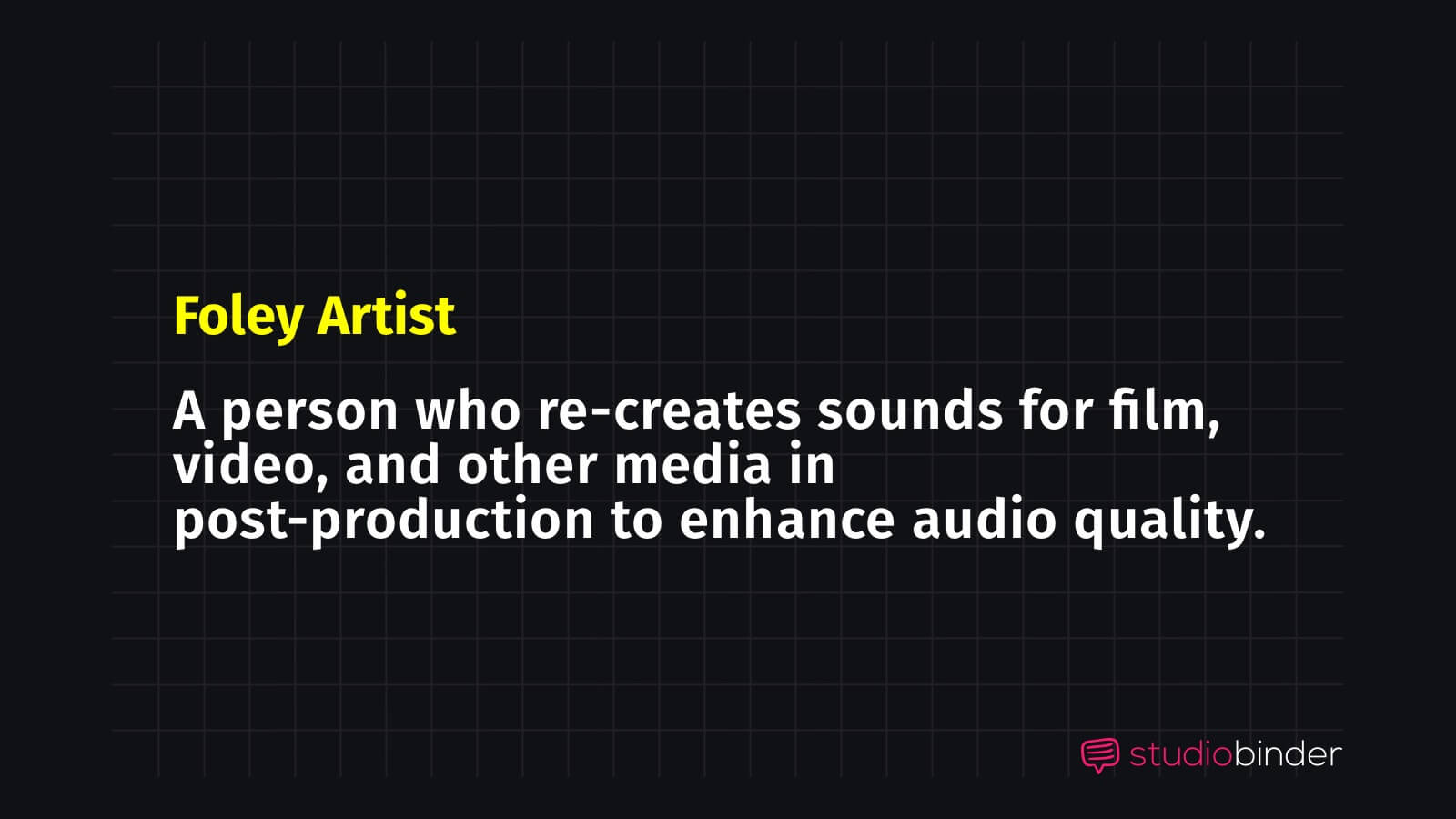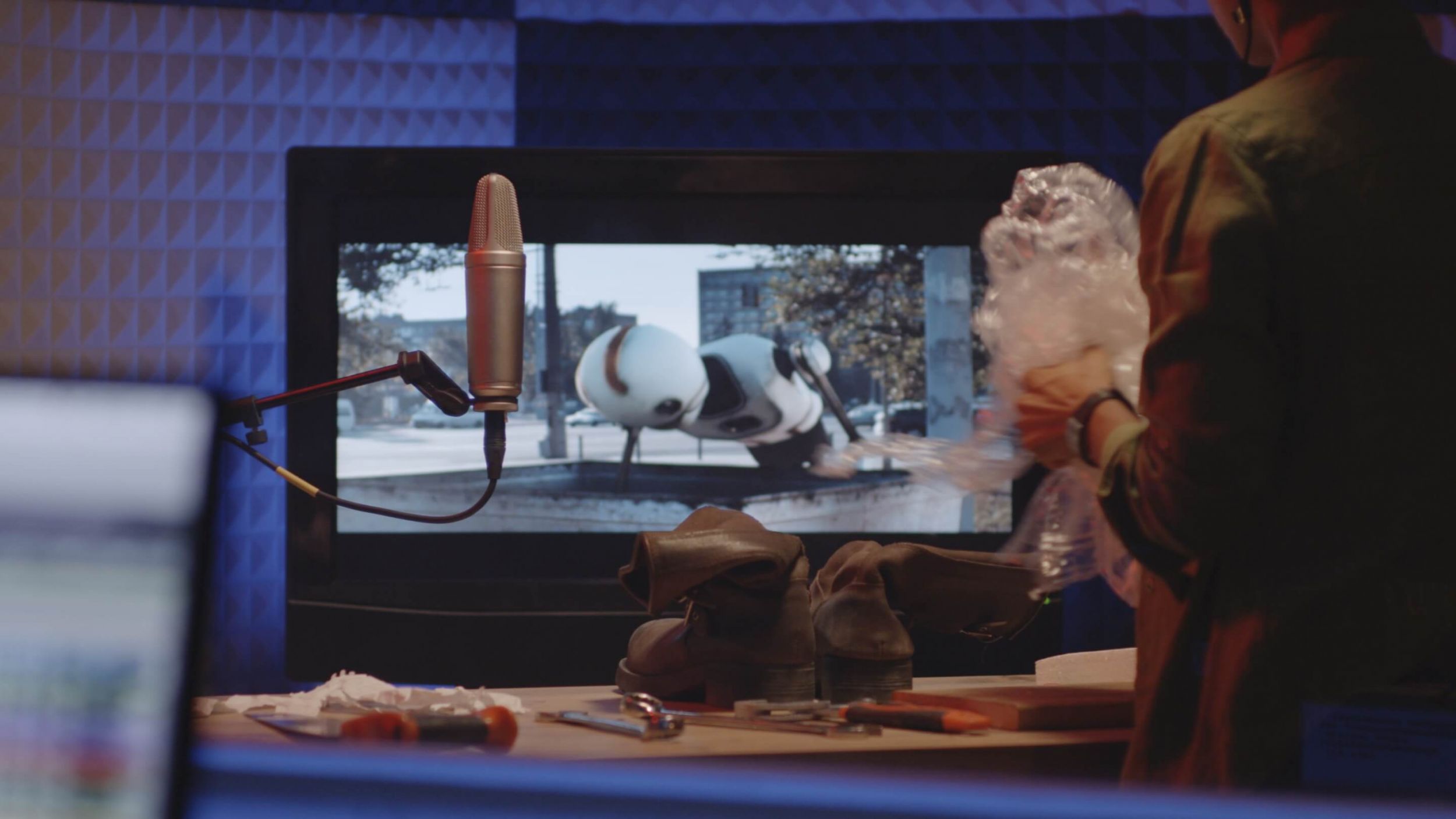One of the main reasons I personally love cinema is because it transports me to a world outside of my own. One of the ways it does that best is by manipulating sounds. I don’t know about you, but when I open a door at home, it does not sound like it does in the movies. And my footsteps are not nearly as epic. Foley artists bring the most mundane tasks to life. So, what is a Foley artist and what do they do?
What is Foley?
Who and what is a Foley artist?
One of the coolest jobs in the industry that requires a deep knowledge of sound, music, and rhythm belongs to artists in charge of "Foley." Sound design is extremely important in creating an immersive experience for the audience — our focus is on the visuals but the sound makes them real.
Images can be grainy, the camera can be handheld and jerky, but sound needs to be perfect. Capturing pristine sound on location is nearly impossible and almost all of it needs to be re-recorded later.
Enter, the Foley artist.
FOLEY ARTIST DEFINITION
What is a Foley artist?
A Foley artist is a person who re-creates sounds for film, video, and other media in post-production to enhance audio quality. They replace sounds that cannot properly be recorded on set. Foley studios have viewing screens, and props, as well as recording equipment to record sounds as they watch the film. These sounds include anything from the swishing of clothing, the breaking of glass, footsteps, or squeaking doors.
They use a variety of props to create specific sounds. Footsteps are created by the artist putting on a certain kind of shoe and walking on the appropriate surface (e.g., wood floors, asphalt, grass). Foley artists also re-record poor quality sounds from the initial set recording, which ends up being most of the sounds you hear in a film.
The term ‘Foley’ comes from Jack Foley (1891-1967), a sound effects pioneer. He worked with Stanley Kubrick but never received much credit besides the term itself.
TYPES OF FOLEY:
- Footsteps
- Movement
- Props
- Clothing
- Weather

What is a Foley artist • Foley artist Definition
Foley Sound Explained
Elements of Foley sound
Foley sound falls entirely under the spectrum of diegetic sound, or the sound within the world of of a film. Non-diegetic sound, which is typically music and narration, is something entirely different. Even with proper sound recording gear and tips, Foley sound recording is a given.
If you think about it, there are a lot of sounds to consider in any given scene. Re-recording dialogue, or ADR, is handled by a different department — it might be the most obvious sound element but it's by no means the only one.
Let's take a look at the various elements you'll find in the typical Foley artist job description.
Watch how Foley artists make their magic with a brief history of the art form and some of their off-the-wall techniques in Foley recording.
Foley recording has got to be the coolest job!
RELATED POSTS
Footsteps
As mentioned in the Foley artist definition, reproducing the sound of footsteps is done by wearing different kinds of shoes and walking on different kinds of surfaces to get the perfect sound for the character.
Movement
The amount of detail and meticulousness required is excessive. Even the smallest movement, like a person crossing their legs with jeans on, needs to make a sound.
Props
Foley artist Marko Costanzo used leaves to create the swirling sound of the witch from Into the Woods. He also used the cracking of celery to create the sound of breaking bones in The Big Lebowski.
Now, let's look at how the Foley artists for A Quiet Place tackled a world where sound equals life or death.
Ever wonder what a stun gun zapping grapes would sound like?
Foley recording for A Quiet Place
As you can see, Foley recording can be highly experimental, and this is why "artist" gets applied to the job title. Foley artists are the unsung heroes of film production — the Oscars for Best Sound Editing go to the Supervising Sound Editor (the Foley artist's boss). Providing an immersive experience for the audience is paramount and precise Foley sound is absolutely necessary.
Related Posts
UP NEXT
Sound recording gear and tips
Foley sound is recorded after a film has been shot but that doesn't mean recording sound on location isn't necessary. Proper sound recording is essential for film and video projects. Here is a helpful overview of the equipment you'll need, including recorders and microphones, and the techniques used to record the best sound.
Up Next: Sound recording essentials →
Showcase your vision with elegant shot lists and storyboards.
Create robust and customizable shot lists. Upload images to make storyboards and slideshows.
